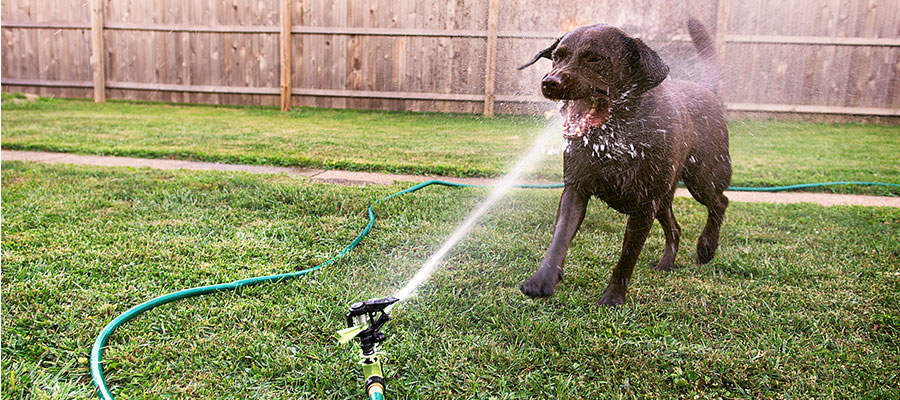Closest Location:
Portland
Open:
7:00AM-8:00PM
GARDEN HOSE BUYING GUIDE
It’s the old reliable. That piece of garden equipment that you never think about, until it fails.
Your garden hose is more than just a tube to deliver water a little farther from its source. There are many variations and permutations to think about. What use do you have in mind? What length do you need? Rubber or vinyl?
There are more choices than you might think. This guide is designed to help you determine which hose is right for your needs and to give you tips and information that you may not know.

TYPES OF GARDEN HOSE:
- LIGHT DUTY: Usually made from cheaper/lower quality materials like vinyl. These will often have plastic fittings and won’t hold up for very long.
- MEDIUM DUTY: As with light duty hoses, these can be made with vinyl materials that have a touch of reinforcing built in. The fittings on these hoses can be plastic or pressed metal. You may get a bit more life out of these, but not much.
- HEAVY DUTY: If you are serious about your garden gear, this would be the way to go. Most often made from rubber and reinforced, these hoses will have heavy metal or cast brass fittings. These will stand up better to hot and cold days as well as direct sunlight and won’t break down as quickly as their lighter counterparts.
- SPRINKLER: A good heavy duty hose (capped at the far end) with purpose made small holes that act as a sprinkler type of irrigation system. You can cover a larger/fixed area with ease with this type of hose.
- SOAKER: The same general principle as the sprinkler hose, but this is made with a porous material that allows water to seep through in a controlled yet constant fashion.
- COMMERCIAL/CONTRACTOR: Built with stronger, more durable materials that can withstand rugged terrain and abuse. Usually rated for higher PSI as well. These are crush resistant with super duty fittings and an extended warranty.
- COLLAPSABLE: An “As seen on TV” product that is almost a novelty item. These hoses collapse down to a smaller, scrunched up size for storage and expand under pressure. However once you open the flow of water they will begin to shrink and once they’ve been pressurized a few times, they begin to lose their elasticity. They are fine as a light duty hoses for certain uses.
LENGTH MATTERS AND SO DOES DIAMETER:
- LENGTH: On average, hoses come in 25’, 50’, 75’ and 100’ lengths. A good rule of thumb is to measure from your spigot to the area you need to water and add 10’. Don’t just go for the longest hose you can. Hoses are heavy; a 100’ hose weighs about 10 pounds. Fully charged, that will hold approximately 4 gallons of water. That’s about 32 pounds of water. So, hose and water together are better than 43 pounds total. That’s a lot to drag around on a hot day.
- DIAMETER: This always refers to the inner diameter of the the hose. The larger the diameter, the more water can flow through the hose. Of course you have to balance water volume with water pressure, so the larger the diameter coupled with the length of the hose (volume) would require more pressure to move the water. The optimal hose diameter for homeowners seems to be 5/8", but your needs may vary.
- PSI: Or Pounds per Square Inch is the measurement of how much internal pressure a hose can handle before failure. A light duty hose will be rated at approximately 200 PSI, while a heavy duty hose may be rated for 600 PSI. With the typical homes water pressure coming in at anywhere between 45 and 80 PSI, a garden hose with a rating of 350 PSI should do the trick with no problems.
FITTINGS:
- CAST BRASS: These are the most durable fittings you’ll find. They are tough and they won’t rust.
- PRESSED METAL: Not the best, but certainly not the worst. These will do well but they won’t take the beating brass will.
- PLASTIC: Will last a season or two with care. But it won’t be long before they crack and leak.
DO'S AND DON'TS:
- ARE ALL HOSES OKAY TO DRINK FROM?
- Believe it or not… NO. Not all hoses are made with materials that are safe to drink from. So if you have kids, pets or you, yourself intend to drink from the hose please make sure that it is approved for drinking.
- HOW CAN I REPAIR A SMALL LEAK?
- Here’s a good video to show you how to fix a small leak.
- CAN I RUN HOT WATER THROUGH MY HOSE?
- Not every garden hose can take very hot water. If this is a feature that you need, you can find garden hoses that are rated for hot water use.
As you can see, that’s a lot of info for a simple garden hose. But at least it should be easier to choose the right one for your particular needs.

